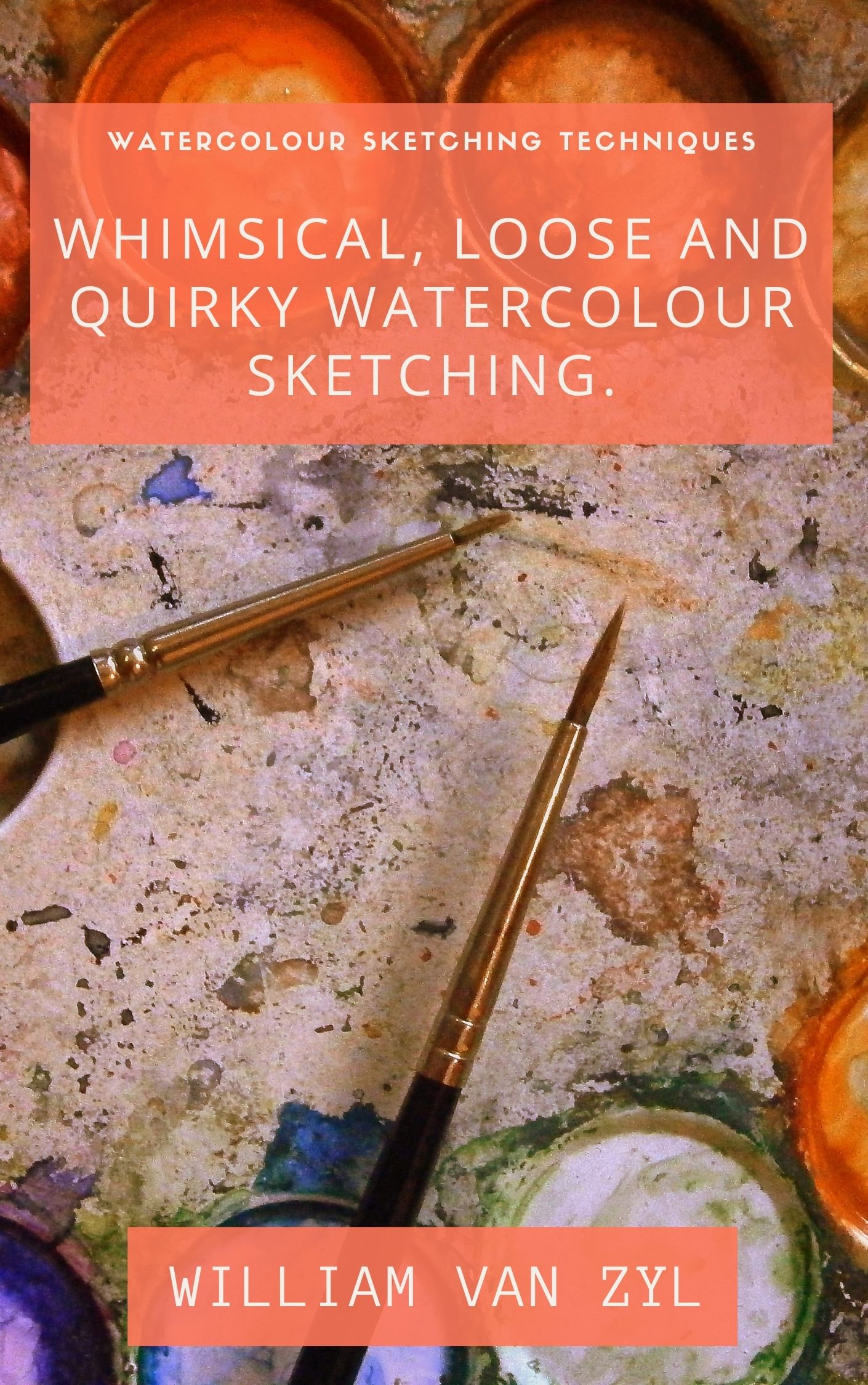
William Van Zyl (2021)
The book of Felix Scheinberger – Urban Watercolour Sketching – challenges the reader with 154 pages of unique sketching ideas. To learn new art techniques and explore new ideas for sketching, one has to immerse oneself in the artist’s work. In this instance, I have used the sketches of Mr Scheinberger (art tutor – Berlin Germany) to inspire my own loose watercolour illustrations. This article contains a couple of drawings relating to Scheinberger’s book, namely pages 34, 35, 69, & 85.
In this blog post, I share my first attempts to explore the techniques of Scheinberger. See the sketches and accompanying captions.
Practice, practice, practice is the best way to master new techniques. The more you practice the new ideas and concepts, the more likely they will become part of your repertoire.
Table of Contents
Who is Felix Scheinberger?
Felix is an illustrator, artist, and designer and author of three books on watercolours, including the bestselling Urban Watercolour Sketching. He has illustrated more than fifty books in the last decade and is a professor of illustration at the University of Applied Sciences. He lives in Germany.

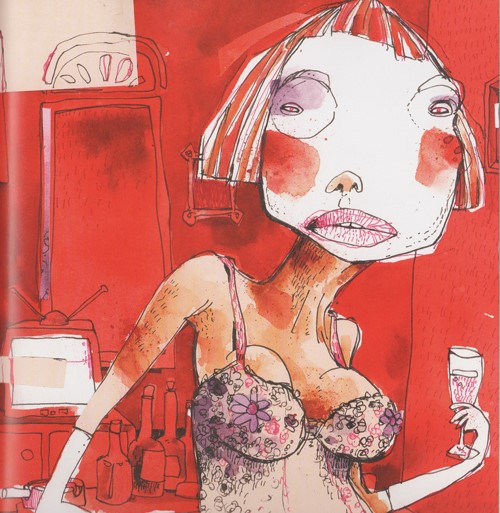
See my first attempt to produce a loose watercolour sketch. Lulu with blue eye shadow – Faber Castell watercolour pencils. A combination of watercolour pencils, black fountain pen ink, and Schmincke Watercolours (pans). The hair is represented with a fun pattern – ribbons or strips rendered with orange watercolour. Note the combination of pencil, ink, watercolour pencils and watercolours. Reference Page 69 (Urban watercolour Sketching)- Felix Scheinberger.


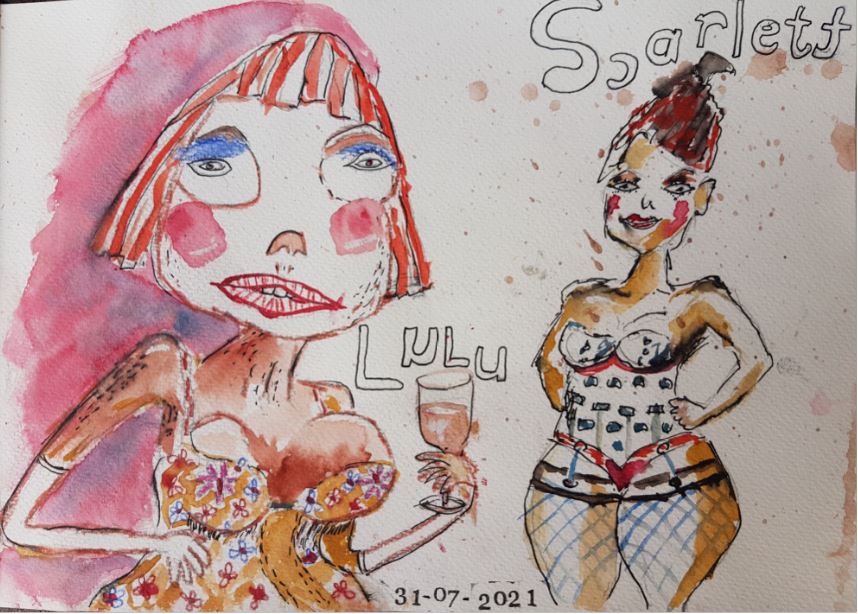
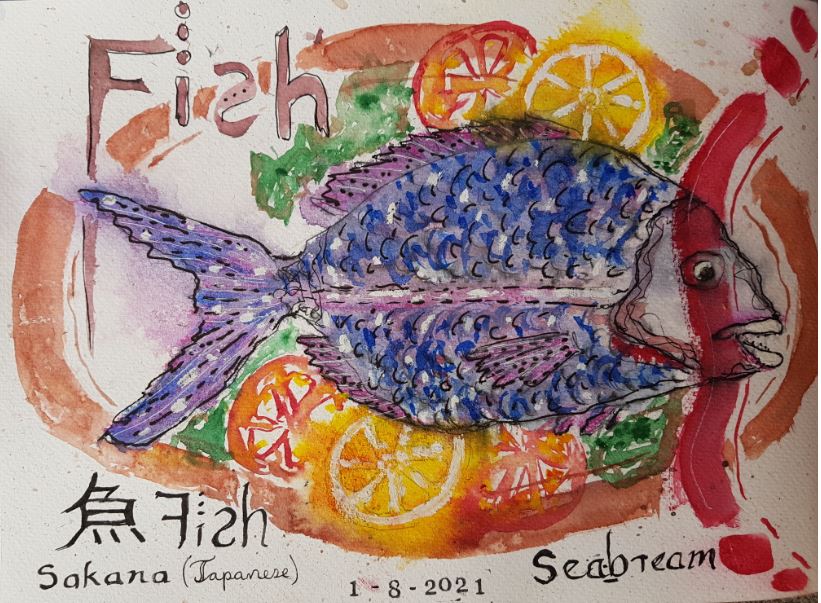
How to loosen your sketching and watercolour painting
To paint loosely, you need to first change your mindset. Loose painting is about capturing an impression or essence of a scene, rather than painting a photographic representation. For example, paint things that are in front of you. Once you get hold of the new ‘loose’ concept ideas, you can let go of your expectations of perfection. Some tips:
1. It is recommended that you focus on the feelings, moods and colours that you feel and see in front of you. For example, choose colours to express your mood or the mood of what you are experiencing when drawing. Close your eyes for a minute and visualise yourself making quick, minimalistic, loose sketches. Don’t overthink it. Just draw and paint. Do several sketches – maybe smaller – using thumbnail size drawings. Almost like when you create a set of ideas or concepts. Imagine you are doing brainstorm or having your own think tank. Quickly sketch and paint.
2. Explore loose and whimsical sketches and paintwork by other artists. You could copy these to extend your thinking and skills. Choose techniques you are not familiar with. Do it in a sketchbook and make notes. While making sketches and drawings ensure you create additional ideas. It is this process that assists artists to change and extend their existing ways of sketching and painting.
3. Be bold, be a little extravagant. Make bigger strokes. Draw and paint faster.
4. Draw small objects and ideas large on the page.
5. Use bold ideas.
6. Research and change your writing style. When writing titles, captions and annotations vary your writing style. Also, do unusual things like changing the letters and numbers to face in the opposite direction. See how Felix writes on his artwork.
7. Unusual shapes and patterns on your artwork: Find old office stamps or make typical potato stamps (cut patterns, etc. from a potato) and the prints to your sketches. It will appear more whimsical.
8. Take different colour paper and sketch and paint on it – cut shapes out – then glue it into your artwork.
9. Cut interesting shapes from a newspaper, magazine, postcards and more. Draw and paint on it. Cut it out with scissors. Glue it into your artwork as part of your art.
10. Use a bigger and longer brush.
11. Sketch simply.
12. Play with abstracts.
13. Paint more wet-on-wet.
14. Embrace paint drips and colour bleeding. Splatter more boldly.
More sketches to follow in the next blog post.
Watch this space for more sketches.
Copyright © 2021 by William Van Zyl
Whimsical, Loose and Quirky Watercolour Sketching.
All rights reserved. This book or any portion
thereof may not be reproduced or used in any manner
whatsoever without the express written permission of the
publisher except for the use of brief quotations in a book review.
Published by Five House Publishing (New Zealand)
First Publishing, 2021
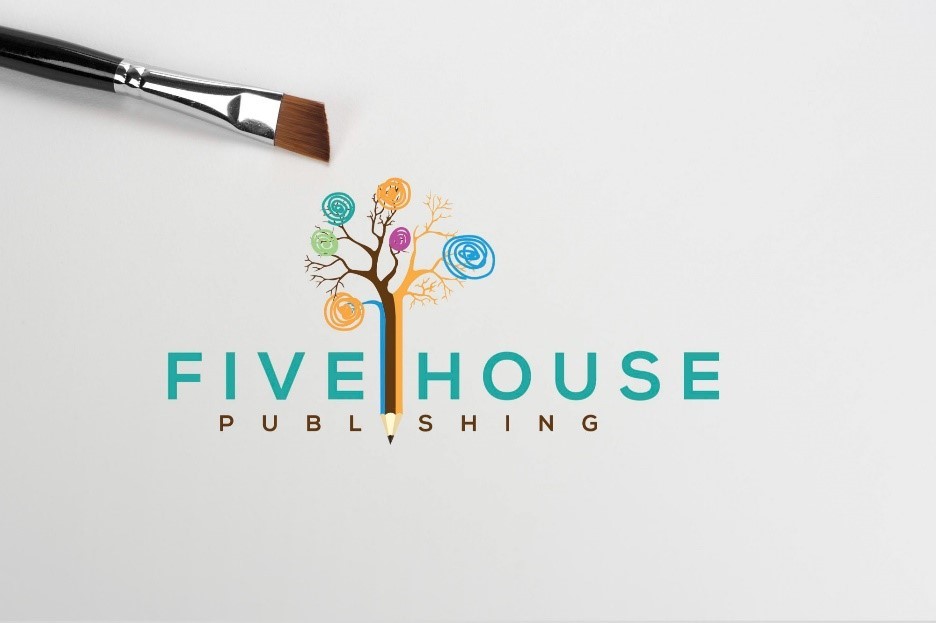
More eBooks and articles are available at https://fivehousepublishing.com/
More about the author at http://williamvanzyl.com/